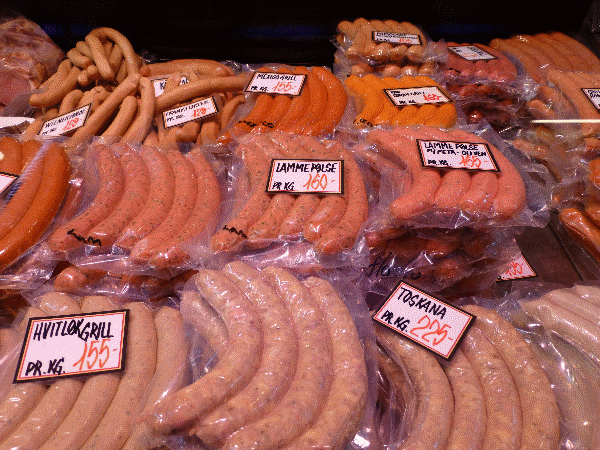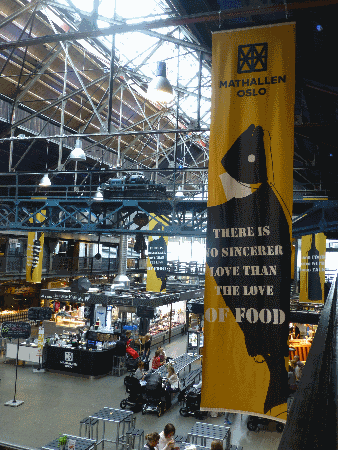
Pure and simple. That’s the essence of Norway from its fjords, as clear and clean as they look, to its people, whose frank gaze and forthright attitude are equally refreshing. Freshness also distinguishes Norwegian food. Blessed with more than 15,000 miles of fjord-indented coastline, bathed by four bodies of water—the North Sea, Norwegian Sea, Barents Sea and Skagen Channel—and graced with acres of forestland, hundreds of working farms and a highly diverse ecosystem, Norway’s immensely varied larder celebrates the freshest bounty of sea and land.
In Norwegian cuisine, the current buzzword is “husmannskost,” or home cooking. Norwegian Foodprints—a joint venture of Innovation Norway (the government tourist office), the Norwegian Farmers Union and HANEN (an organization that promotes farm products)—gives its black, white and red seal of approval to restaurants preparing food from fresh ingredients. But real food—fresh food cooked in the simplest, most uncomplicated way—has long been a Norwegian staple.
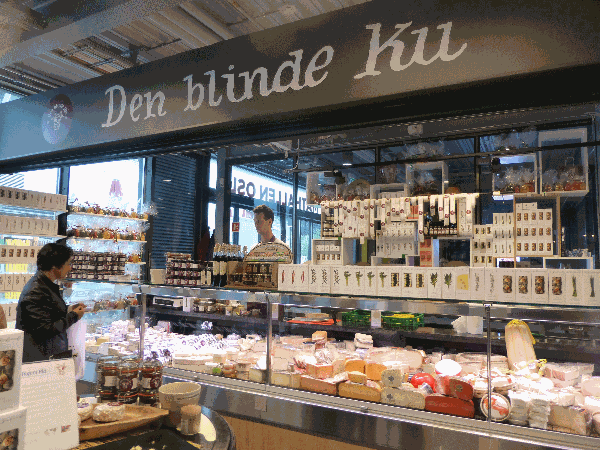
Freshness starts at the water’s edge. With a seafaring past inherited from the Vikings, you’d think fish-loving Norwegians had a genetic predisposition for fresh seafood. Scientists do know that Norway’s cold waters slow growth, producing finer fleshed, more flavorful fish. Salmon, a big favorite, is simply broiled, grilled or baked, or poached and served with mustard sauce. Smoked salmon shows up at breakfast and as an appetizer. What we know as lox, and often eat with bagels and cream cheese, Norwegians call gravlaks—salmon cured for several days in salt, sugar and dill until it melts in your mouth. There’s also haddock, pollock, Arctic char and virtually any other fish you can think of. Pickled herring, a popular Scandinavian appetizer, available in cream, wine or mustard sauce, also appears on every breakfast buffet.
Cod, or torsk, Norway’s most storied fish, is served grilled, baked, fried or sautéed. Dried cod, known as stockfish, or klippfisk, has been a staple from Viking times to the 14th century Hanseatic merchants up until today. It’s a key ingredient in Norwegian bacalao, dried cod braised with tomatoes, onions and olives, a dish also served in Portugal, Spain, and Brazil. Another favorite is lutefisk, cod soaked in lye—the food-grade variety, not the drain cleaner—to a jelly-like consistency, then baked, grilled or poached. Some say lutefisk dates back to when the Vikings plundered Ireland. Legend has it that St. Patrick—who actually lived several centuries before—sent his people to throw lye, made from birch-tree ash, on the Vikings’ store of dried cod. Rather than being repulsed, the Vikings were delighted.
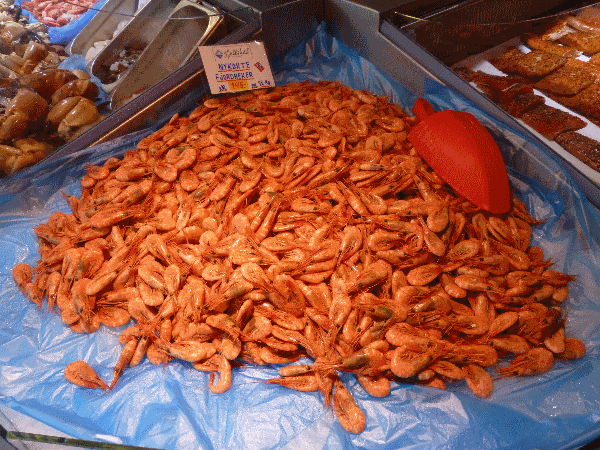
To sample Norway’s best seafood in a seagoing environment, take a 6 or 12-day cruise aboard Norway’s Hurtigruten line. In spring, summer, fall and winter, Hurtigruten ships cruise 1,500 miles of coast between Bergen and Kirkenes, near the Russian border. While aboard guests sample seafood buffets and unusual meat specialties like reindeer carpaccio with cranberry syrup. Or try Norway’s piscine diversity in one fell swoop with a bowl of fiskesuppe. A thick, creamy chowder, it’s chock-full of fish, cod, salmon and shrimp as well as codfish balls (fiskeboller). Fiskesuppe is popular throughout Norway, but in the beautiful (and often rainy) city of Bergen, warm up with some of the country’s best fiskesuppe at venerable Bryggeloftet & Stuene.
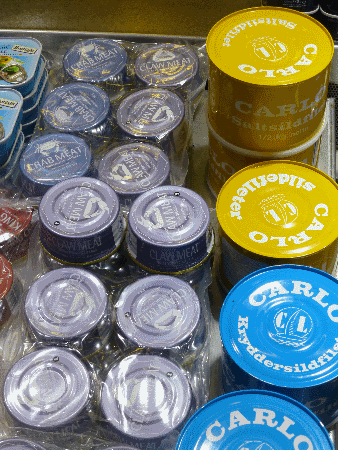
Norway’s clear waters harbor plenty of shellfish, too. A popular lunch is an open-faced sandwich, or smørbrød, garnished with mayonnaise and lettuce and topped with a mountain of shrimp. Small crayfish-like lobsters, called langoustines, are steamed or sautéed. The best delicacy of all is the red king crab, also known as the Kamchatka or giant crab, measuring up to 6 ½ feet between its claws and weighing up to 30 pounds. In the Barents Sea, where Norway meets northern Russia, various companies run King Crab Safaris. In summer, Hurtigruten offers safaris as optional shore excursions complete with sumptuous crab fests enjoyed in a candlelit fisherman’s shack.
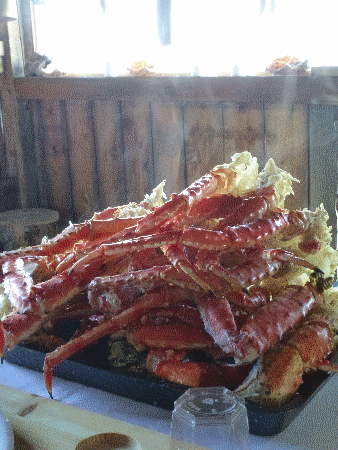
As for farm fresh meat, pork shows up roasted or as sausages, often with steamed sweet and sour red cabbage or pickled beets. At Christmas, and major holidays like Easter and Norway’s May 17 Constitution Day, there’s baked ham (juleskinke) and ribbe, juicy roast pork belly served with sauerkraut, boiled potatoes, sausages, and meatballs with gravy. So popular is ribbe that Innovation Norway reports that 5,000 tons are eaten every Christmas—the equivalent of 200,000 pigs annually!
Calves don’t fare much better among Norwegian carnivores who enjoy a variety of veal dishes. Neither do baby sheep. Along with roast lamb, favorites are fårikål, lamb simmered with cabbage and peppercorns and pinnekjøtt, dry, salted lamb ribs cooked over a birch-wood fire, and served with sausages, mashed potatoes and rutabaga (a.k.a. “swedes”). If you’re adventurous, try smalahove. Sometimes called smalehovud or skjelte, it’s salted and dried lamb’s head that’s boiled and served with mashed potatoes and swedes. Sometimes the brain is removed before cooking; other times it’s cooked intact and later eaten with a spoon as a delicacy. Popular on Norway’s west coast, particularly in fall and at Christmastime, the admittedly extreme dish is a specialty of Voss, the capital of extreme sports like bungee jumping and skydiving.
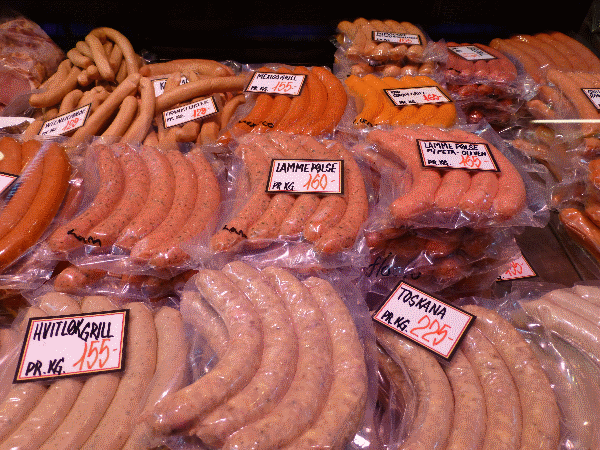
Not so adventurous? Then stick with the perennial favorite, Norwegian meatballs, known as kjøttkaker or kjøttboller. Similar to Swedish meatballs, the Norwegian variety is usually slightly larger, but also made with beef, veal and pork, and topped with brun saus or gravy. Typically, meatballs are served with boiled or mashed potatoes and grønnerterstuing, or mushy peas—not the canned variety that Brits enjoy with fish and chips but dried peas stewed till they’re thick and creamy.
Forestlands make up more than a third of Norway. So, not surprisingly, game is often on the menu. Reindeer, moose and deer are popular as steaks, fillets, and pâtés, in stews or in carpaccio-like slivers. There’s plenty of duck, goose and other wildfowl, too.
Lefse, a potato pancake, makes a savory or dessert snack. Besides dark and crusty white breads, there’s flatbrød, ultra-thin whole grain flatbread, and knekkebrød, a thicker rye crispbread, both found in many American supermarkets. Similar to crackers, flatbreads are excellent with gravlaks, pickled herring, and Norwegian cheeses like Jarlsberg (made with cow’s milk), brunost (made with caramelized whey) and geitost (made from goat’s milk and a specialty of Undredal on the famed Aurlandsfjord).
Norway has yet another major food group—berries. Like other Scandinavians, Norwegians are mad for them. From late June through the middle of October, hordes of Norwegians scramble up mountainsides and scour woodlands and swamps in search of the juicy orbs. The most coveted is the cloudberry, a small yellow or orange-yellow berry known as “highland gold.” Almost as revered is the lingonberry, a small red berry related to the cranberry, which Norwegians also harvest along with wild strawberries, raspberries, blackberries, blueberries, bilberries (known as Arctic blueberries) and currants.
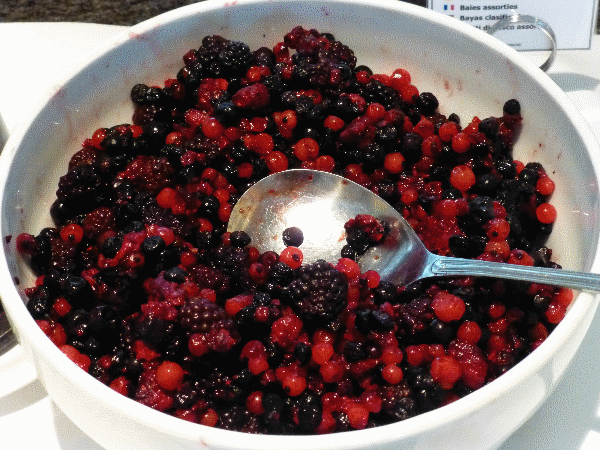
Fresh berries are eaten alone, or folded into desserts like cloudberry cream, or multekrem, a heavenly concoction of cloudberries, whipped cream and sugar that some say is derived from the Sami custom of preserving berries in fat-rich reindeer milk. Berry preserves are smeared on crepe-like Norwegian pancakes—pannekaker—for breakfast, tea time or dessert. Riskrem—Norwegian rice pudding mixed with heavy cream—is served with a red berry sauce, usually lingonberry, raspberry or strawberry. At Christmas, an almond is hidden inside and whoever finds it gets a marzipan pig!
Cookies, or småkaker, range from the simplest sugar, oatmeal or almond variety to the more elaborate krumkake, a crisp butter cookie made on a patterned krumkake iron then twirled into a cone, brushed with confectioner’s sugar, or filled with whipped cream and/or fruit. At Christmas, a host traditionally serves no fewer than seven types of homemade cookies, including ginger cookies, or pepperkaker. Also appearing at Jul time and on special occasions is the kransekake, an almond flavored ring cake composed of 18 wreath-like layers stacked in decreasing sizes to form a conical pyramid.
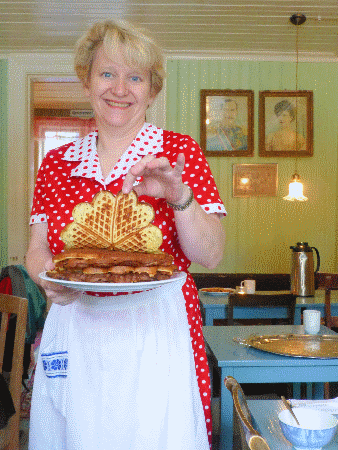
Wines from France, Germany, Italy and other countries are often served with meals. But beer is the most popular beverage. Most Norwegian brews are pale lagers, though at Christmas, special spice-infused dark beers, called juleøl, appear. Norwegians also drink Christmas gløgg, a syrupy mulled wine with orange juice, dried almonds, raisons, prunes and apricots as well as cloves, cinnamon and cardamom. For many Norwegians, no meal is complete without a wee dram of aquavit—or, in Norwegian, akevitt—a potato based spirit flavored with caraway seeds and sometimes anise, dill, fennel or coriander.
Fortified with a hearty Norwegian meal, and perhaps a glass of beer with an aquavit chaser, you’re ready to face hours of sightseeing—whether it’s swooning over Munch paintings in Oslo’s National Gallery, exploring the west coast’s Fjord Country on the day-long Norway In A Nutshell tour, cruising the coast aboard a Hurtigruten liner or cross-country skiing under the Northern Lights. God Middag—which means “bon appetit” in Norwegian—and happy trails!
Where to learn more:
www.visitnorway.com
*For more information on Norway travel, there’s no better tool than a DK Eyewitness Travel Guide.

